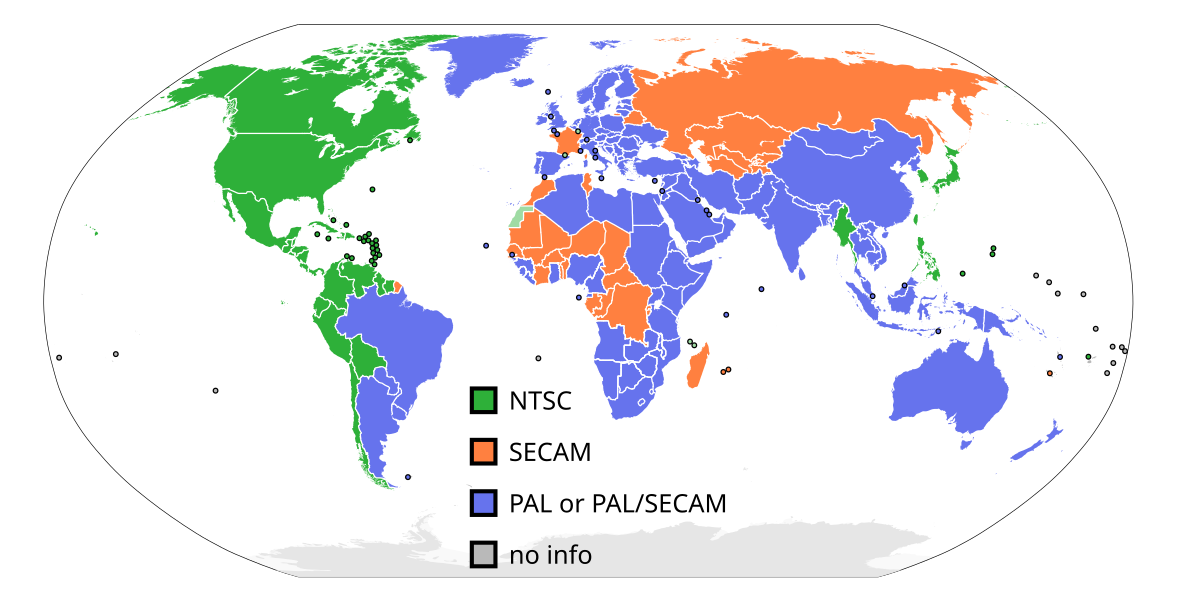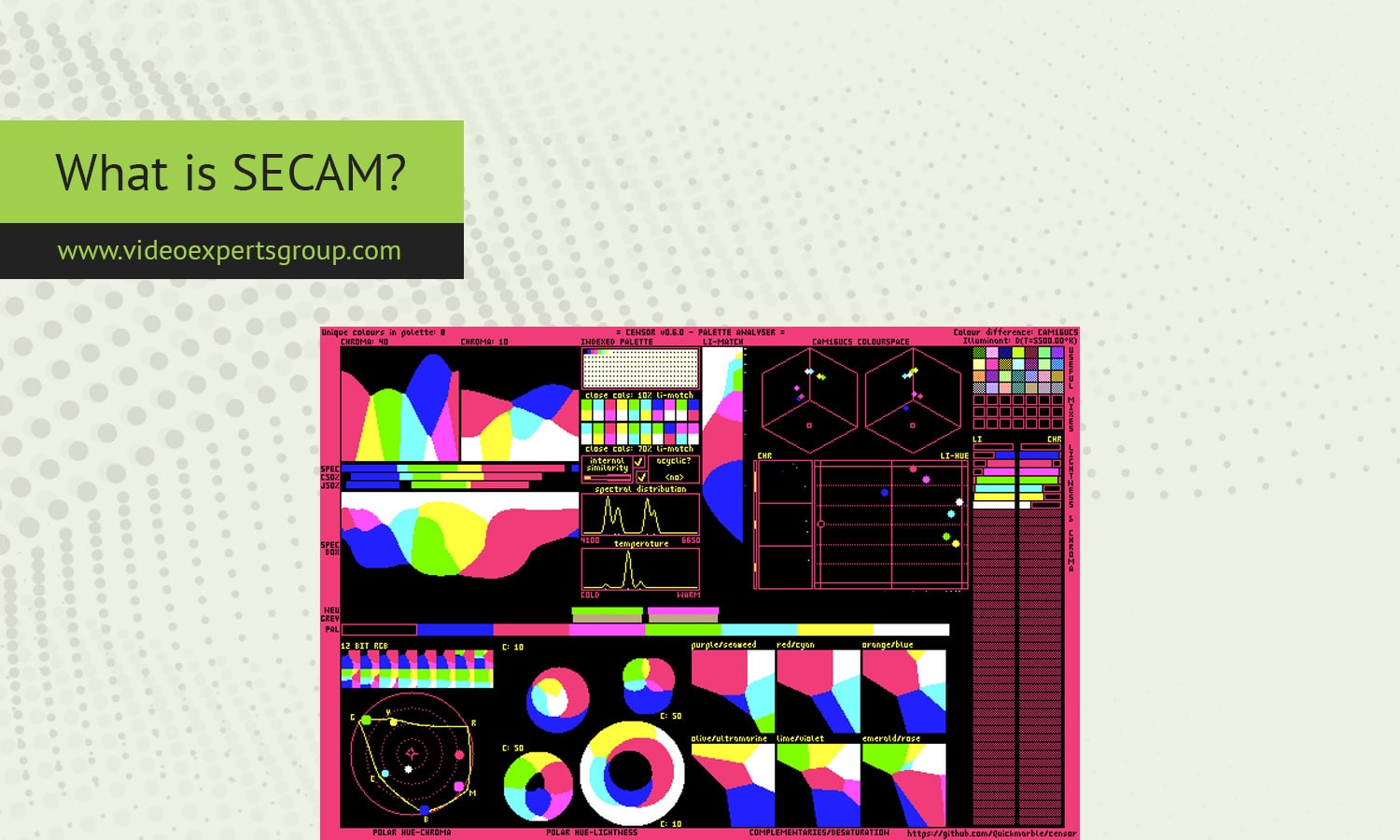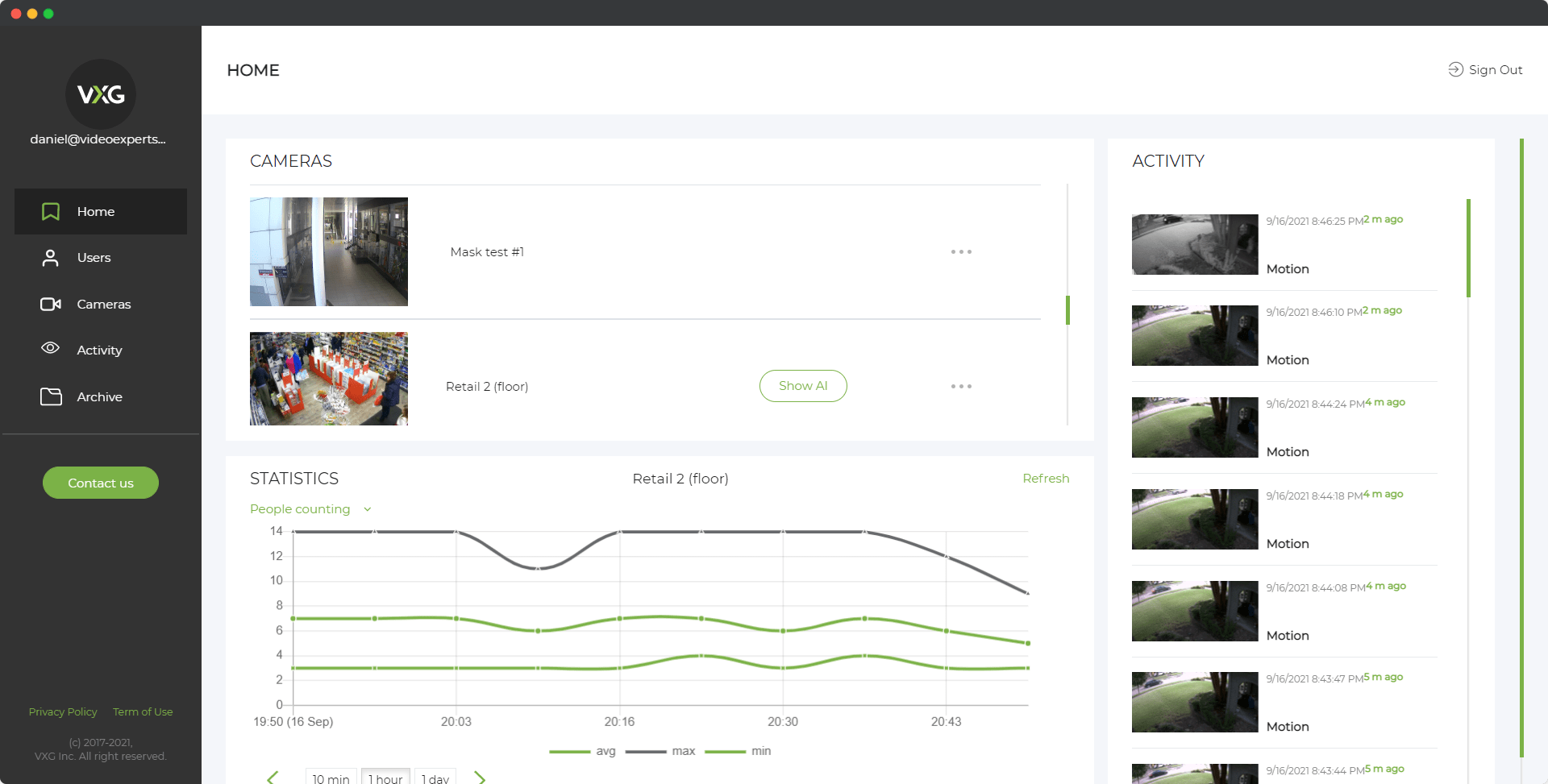SECAM (Séquentiel Couleur à Mémoire, or Sequential Color with Memory in English) is a color television broadcasting system developed in France in the early 1960s. It was one of the three main analog color encoding systems used globally, alongside NTSC and PAL. SECAM was designed to provide reliable color broadcast transmission, particularly in regions with challenging signal conditions, such as areas with a large geographic spread or interference. While it was highly efficient in specific environments, SECAM's adoption was limited to certain countries, and like other analog systems, it has largely been replaced by digital formats today.
Meaning
SECAM stands for Sequential Color with Memory, a system designed to encode and transmit color television signals. It was developed as an alternative to the NTSC and PAL systems, primarily by French engineer Henri de France. Introduced in the early 1960s, SECAM uses a different method of color transmission than its counterparts. While NTSC and PAL transmit color signals simultaneously with luminance (brightness) information, SECAM transmits color data in a sequential manner, with one color component (either red or blue) transmitted per line.
The "memory" aspect of SECAM refers to how the system stores color information temporarily to ensure that it can be displayed correctly on the screen. This was designed to reduce the impact of signal degradation over long distances, making SECAM more resilient to interference compared to NTSC or PAL.
What is SECAM Used For?
SECAM was primarily used for broadcast television in countries that adopted it as a national standard. The system was designed to be more robust in challenging signal conditions, which made it suitable for countries with vast rural areas or mountainous regions where signal degradation could be a problem. SECAM’s sequential color transmission method made it less susceptible to certain types of interference, particularly when signals needed to travel long distances.
In addition to broadcast television, SECAM was used in video recording formats, such as VHS, Betamax, and DVD players, specifically in regions where SECAM broadcasts were common. It was also employed in early security cameras, where analog video recording was the norm. However, with the global shift to digital broadcasting, SECAM has largely been phased out, though some legacy equipment and systems may still use it.
Which Countries Use the SECAM System?

SECAM was developed in France, and it became the standard for color television broadcasting in several countries, particularly those with historical or political ties to France. The main regions and countries that used SECAM include:
- France (the system’s origin)
- Russia and many former Soviet Union states
- Eastern Europe, including Poland, Hungary, and Romania
- Africa, particularly in French-speaking countries like Algeria, Morocco, and Ivory Coast
- The Middle East, including countries such as Iran and Iraq
While SECAM was once the dominant system in these regions, most countries have transitioned to digital broadcasting standards like DVB (Digital Video Broadcasting), making SECAM less common today.
What is a SECAM Security Camera?
A SECAM security camera is a surveillance camera that records and transmits video using the SECAM color encoding system. These cameras were primarily used in countries where SECAM was the standard for broadcast television. Like other analog security cameras, SECAM-based cameras were designed to be compatible with SECAM monitors and video recorders, ensuring smooth and consistent video playback.
While SECAM cameras provided reliable video footage in the past, they have largely been replaced by digital security systems, which offer higher resolution, better frame rates, and more advanced features. However, legacy SECAM security cameras may still be found in older installations or regions where transitioning to digital systems has been slow.
SECAM Resolution
The standard resolution for SECAM broadcasts is 720x576 pixels, which is equivalent to Standard Definition (SD) video in a 4:3 aspect ratio. This is the same resolution used by the PAL system, which is why SECAM and PAL are often compared in terms of video quality.
SECAM, like PAL, offers better resolution compared to NTSC, which operates at 720x480 pixels. However, SECAM’s sequential color transmission and error resistance made it more suitable for environments where signal strength and quality could fluctuate.
SECAM Frame Rate
SECAM operates at a frame rate of 25 frames per second (FPS), with an interlaced scanning method. This means that each frame is displayed in two fields, with the odd-numbered lines displayed first, followed by the even-numbered lines. The system operates at 50 fields per second, creating the illusion of smooth motion.
The 25 FPS frame rate is directly tied to the 50 Hz power supply used in the regions where SECAM was standard, such as Europe, Africa, and the Middle East. This synchronization helped ensure consistent video playback without flickering.
Advantages and Disadvantages
Advantages of SECAM
- Robust Signal Transmission: SECAM’s sequential color transmission makes it more resistant to signal interference and degradation, particularly in rural or mountainous regions.
- Less Color Distortion: Unlike NTSC, which can suffer from color distortion when the signal is weak, SECAM maintains better color accuracy over long distances.
- Compatible with PAL Resolutions: Since SECAM uses the same resolution as PAL (720x576), it offers higher video clarity compared to NTSC’s 720x480 resolution.
Disadvantages of SECAM
- Complex Color Processing: SECAM’s sequential color transmission requires more complex processing, which made early equipment more expensive and harder to manufacture.
- Limited Global Adoption: While PAL and NTSC were adopted in many parts of the world, SECAM was mainly used in France, Eastern Europe, Africa, and parts of the Middle East, limiting its global compatibility.
- Incompatibility with PAL/NTSC: Unlike PAL and NTSC, which can be converted between each other with minimal equipment, SECAM requires more extensive conversion equipment, making cross-compatibility difficult.
- Phased Out: As the world has moved towards digital standards, SECAM is now rarely used, and it is considered obsolete in most regions.
FAQ
SECAM was a major player in the world of analog broadcasting, particularly in regions with challenging transmission conditions. While it offered several advantages in terms of signal resilience and color accuracy, the global shift to digital systems has made SECAM obsolete. Understanding SECAM remains important for those working with legacy video systems or international video formats, but its role in modern broadcasting and video applications has largely diminished.
















